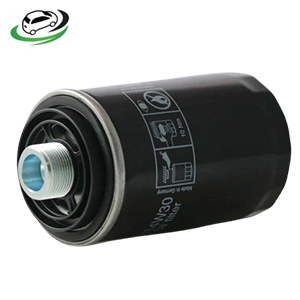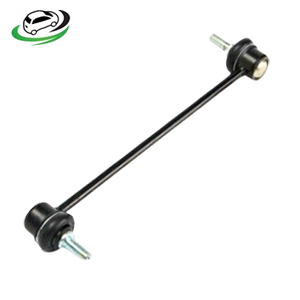-15%
Get Front Stabilizer Link Assy AUDI A3/ VW Golf/ V-Passat 3C2/3C5/ Touran 1K0411315J
The stabilizer link, also known as the sway bar link or anti-roll bar link, is a critical component in a vehicle’s suspension system. It connects the stabilizer bar (or sway bar) to the vehicle’s suspension, playing a pivotal role in maintaining stability and control during driving, especially when navigating turns and uneven road surfaces. This essay explores the function, design, types, symptoms of wear, maintenance, and benefits of stabilizer links, underscoring their significance in automotive engineering.
Function of Stabilizer Links
The primary function of the stabilizer link is to connect the stabilizer bar to the suspension components, typically the control arms or struts. The stabilizer bar itself is designed to reduce body roll and improve handling by distributing weight more evenly across the vehicle’s wheels during cornering or when driving over bumps.
When a vehicle turns, the body tends to lean or roll to one side due to centrifugal force. The stabilizer bar, through the stabilizer links, counteracts this motion by transferring force from one side of the suspension to the other. This helps keep the vehicle more level and improves traction, stability, and overall handling.
Design and Components
Stabilizer links are relatively simple in design but crucial for the suspension system’s effectiveness. They typically consist of the following components:
- Ball Joints: These allow for rotational movement and are usually found at both ends of the stabilizer link. The ball joints enable the link to pivot and move with the suspension.
- Rod or Bar: The main body of the stabilizer link, connecting the two ball joints. It can be made from metal or composite materials.
- Bushings: Often used to reduce vibration and noise, bushings are typically made from rubber or polyurethane and are located where the stabilizer link attaches to the suspension components.
Types of Stabilizer Links
Stabilizer links come in various designs, suited to different types of vehicles and driving conditions:
- Standard Stabilizer Links: These are the most common type and are found in most passenger vehicles. They are straightforward in design, typically featuring metal rods and ball joints.
- Adjustable Stabilizer Links: Used in performance or customized vehicles, these links can be adjusted to alter the vehicle’s handling characteristics. This adjustability allows for fine-tuning of the suspension setup.
- Heavy-Duty Stabilizer Links: Designed for off-road or heavy-duty applications, these links are more robust and can withstand greater forces. They are often found in trucks, SUVs, and vehicles used for off-road driving.
Symptoms of Worn Stabilizer Links
Recognizing the signs of worn or damaged stabilizer links is essential for maintaining vehicle safety and performance. Common symptoms include:
- Clunking or Rattling Noises: A worn stabilizer link can cause clunking or rattling noises, especially when driving over bumps or uneven surfaces. This noise is often due to the ball joints or bushings wearing out.
- Poor Handling: If the vehicle feels less stable, particularly during cornering, it may indicate that the stabilizer links are not functioning correctly. Increased body roll and reduced steering responsiveness are common signs.
- Uneven Tire Wear: Worn stabilizer links can lead to uneven tire wear, as the suspension system is not properly distributing weight and force across the tires.
- Visual Inspection: Physical damage or excessive wear on the stabilizer link components, such as cracked bushings or loose ball joints, is a clear indication that replacement is needed.
Maintenance and Replacement
Maintaining stabilizer links involves regular inspection and timely replacement when necessary. While they are generally durable, stabilizer links can wear out due to factors such as road conditions, driving habits, and environmental exposure.
- Regular Inspection: Periodically inspect the stabilizer links for signs of wear, damage, or looseness. This is often done during routine vehicle maintenance or when diagnosing suspension-related issues.
- Replacement: If symptoms of wear are detected, replacing the stabilizer links is crucial. The process involves lifting the vehicle, removing the old links, and installing new ones, ensuring they are properly torqued to the manufacturer’s specifications.
- Quality Parts: Using high-quality replacement parts is essential for longevity and performance. Opting for OEM (original equipment manufacturer) or reputable aftermarket parts can ensure reliability.
Benefits of Properly Functioning Stabilizer Links
1. Improved Handling and Stability
Stabilizer links play a crucial role in reducing body roll during cornering and sudden maneuvers. By connecting the stabilizer bar to the suspension, they help distribute weight more evenly across the tires, improving the vehicle’s overall stability and handling. This results in more predictable and controlled driving, especially during turns and on uneven surfaces.
2. Enhanced Safety
With improved stability and handling, properly functioning stabilizer links contribute to safer driving conditions. They help maintain better control of the vehicle, reducing the risk of accidents caused by excessive body roll or loss of traction. This is particularly important during emergency maneuvers or when driving on slippery or uneven roads.
3. Reduced Body Roll
One of the primary functions of stabilizer links is to minimize body roll. When a vehicle takes a turn, centrifugal force can cause it to lean to one side, which can be unsettling for both the driver and passengers. Stabilizer links help counteract this force, keeping the vehicle more level and reducing the sensation of body roll. This leads to a more comfortable and confident driving experience.
4. Even Tire Wear
By maintaining proper alignment and weight distribution, stabilizer links help ensure that tires wear more evenly. Uneven tire wear can lead to reduced traction and increased risk of blowouts. Properly functioning stabilizer links contribute to longer tire life and better overall tire performance.
5. Enhanced Ride Comfort
Stabilizer links, along with the rest of the suspension system, help absorb shocks and vibrations from the road. Properly functioning stabilizer links contribute to a smoother and more comfortable ride by minimizing the transfer of road irregularities to the vehicle’s cabin. This makes for a more pleasant driving experience, particularly on rough or uneven roads.
6. Increased Steering Responsiveness
With properly functioning stabilizer links, the vehicle’s suspension system can respond more effectively to steering inputs. This results in more precise and responsive steering, allowing the driver to navigate turns and obstacles with greater confidence and ease.
7. Prolonged Suspension Component Life
Stabilizer links help reduce the stress and strain on other suspension components by maintaining proper alignment and distribution of forces. This can lead to a longer lifespan for parts such as shocks, struts, and control arms, reducing the frequency and cost of suspension repairs.
8. Better Vehicle Control in Adverse Conditions
In adverse driving conditions, such as rain, snow, or gravel roads, stabilizer links help maintain vehicle control by reducing body roll and improving stability. This is especially beneficial when driving on slippery surfaces or during sudden changes in direction.
9. Maintaining Manufacturer Specifications
Properly functioning stabilizer links ensure that the vehicle’s suspension system operates as designed by the manufacturer. This helps maintain the vehicle’s performance characteristics and can be crucial for retaining warranty coverage and meeting safety standards.
Follow us on Facebook for more parts.



